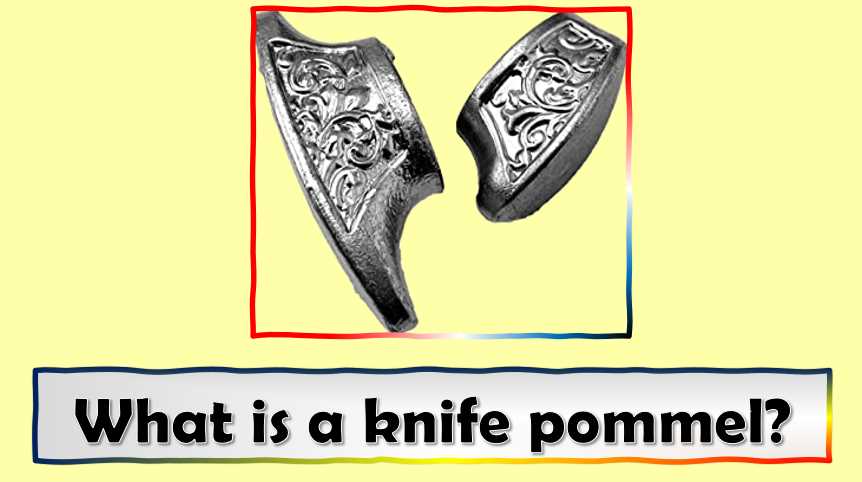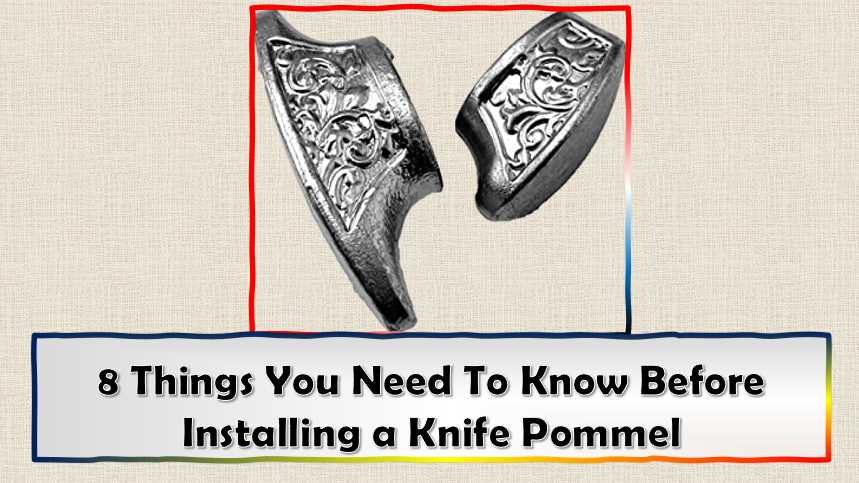Are you considering installing a knife pommel? If so, you’ll want to understand the benefits and risks first. In this comprehensive video, we discuss everything you need to know about this popular installation option.
We cover topics like installation techniques, installation costs, and possible risks. We also provide a complete list of the benefits and drawbacks of installing a knife pommel so you can make an informed decision. Watch the video now and learn everything you need to know before making your installation decision.
What is a knife pommel?

A knife pommel is the end of the handle that protrudes from a knife blade. It is typically made of expensive materials like ivory, brass, or stainless steel and can add a significant amount to the price tag of a knife.
While there are many obscure reasons why someone might want to buy a particular type of pommel, most people use them as grips while cutting. They may be decorative (for example, on samurai swords) or functional (like adding additional strength to an edge). Pommels also provide stability for hand-held knives and help prevent slippage during use like Knife Blocks.
Different Types
There are many different types of knife pommels, and each has its benefits and drawbacks.
The most common type of knife pommel is the clip-pointed variety. This is a design where the blade curves sharply inward at the point, making it easier to grip.
It’s also ideal for stabbing because it offers good leverage and makes it easy to hit your target.
However, clip points can be challenging to sharpen, requiring a sharp angle to produce an effective cutting edge. They’re also not the best option if you want a long-term commitment to your knife – clip points tend to wear down quickly.
Another popular type of pommel is the spear-pointed design. Spearpoints have a pointed tip angled forward instead of backward, like on clip points, giving them superior slicing capabilities. They’re also forgiving than clip points in sharpening, as you can get away with a much rougher edge.
But spearpoints are also harder to hold onto because they’re curved rather than straight – they can be slippery in wet or oily conditions.
Finally, the bowie-style knife pommel combines features from spearpoints and clip points into one design. It has a pointy front end that resembles a spearhead but a wider back that makes it easier to grip.
How to install a knife pommel?
Knife Pommels are essential to any knife, and installing them correctly ensures that your blades remain safe and functioning. Follow these simple steps to establish a proper pommel:
First, mark the location of the holes on your blade, which will help you drill the holes correctly.
Remove the grip from the blade by unscrewing it with a Phillips head screwdriver. Some holds may have screws at both ends, while others only have one end screw. Refer to your grip for more information on how to remove it safely.
Next, place the pommel onto the handle so that the sharp edge is facing down and tighten using an Allen wrench or hex key (depending on your type of pommel). Make sure not TOO tightly as this can cause damage or wear over time.
Next, drill the holes. Make sure they are large enough so the screws can fit through them quickly but not so large that they come loose over time.
You can choose to use screws with a nut and washer on either side of them (this is called a self-tapping screw), or you can use screws with a pre-drilled hole in the head (these are called machine screws).
Next, choose the correct screw size. It’s essential to ensure that the screw is strong enough to hold your blade in place while also being thin enough not to affect how your knife feels when you use it.
Finally, prepare your edge for installation by rubbing it down with a file or sandpaper until it’s smooth and level.
Now, put the blade in the correct position and screw the pommel into place.
Make sure it’s tight enough so the blade doesn’t move around and loose enough to remove it if you need to quickly.
Now your knife is ready to use!
Benefits of Installing
There are several benefits to installing a knife pommel. These include:
Increased safety
A pommel stiffens the blade and helps to prevent it from wobbling or swinging around while in use. This can be especially important when using knives that are difficult to control, such as those with serrated blades.
Improved grip
A pommel provides a secure hand grip, making it easier to hold the knife steady and make accurate cuts.
Enhanced functionality
A knife with a pommel can be more easily wielded and used for various purposes, such as slashing or stabbing.
Enhanced appearance
A well-designed and comfortable pommel can make a dull or unappealing knife look more appealing and stylish.
Comfort and ergonomics
The pommel should be designed to provide a comfortable, secure grip for the hand, making using the knife more enjoyable and accessible.
How to choose the best knife pommel for your needs
When shopping for a knife, it’s essential to consider the type of pommel it comes with. There are different types of pommels, each with unique benefits and drawbacks.
The most common type of pommel is the full tang, the part of the knife that goes through to the handle. This type of pommel is solid and durable and can withstand much abuse (including being thrown). It’s also easy to replace if it breaks or gets lost.
The downside of a full tang is that it can be challenging to carry around due to its large size. Another downside is that it can make your knife harder to use because you have to hold onto the handle more tightly for it not to swing around.
The half tang is a compromise between full and partial tangs. It has the same strength as a full tang but less weight, making it easier to carry around. It also reduces the risk of your knife swinging around, making it easier to use in tight spaces or during combat situations.
The clip-point pommel is another popular option for knife owners. It has a sharp point at one end and a rounded edge at the other, making it ideal for stabbing and cutting soft materials like meat or fruit. It also has a slim design.
Style: The style of the pommel will largely determine how easily it can be attached to the blade. There are round, oval, and diamond-shaped pommels, each with advantages and disadvantages.
Material: Most knife pommels are made of metal or plastic, but some are made of other materials like bone or ivory. Choosing a durable and comfortable fabric is essential so you don’t have to adjust the pommel constantly.
Size: The size of the pommel is also crucial because it needs to fit snugly onto the blade without being too tight or loose. A too-tight fit may cause irritation or injury, while a too-loose fit may make it difficult to attach the pommel securely.
Price: Price isn’t always an indicator of quality, but you should consider it when purchasing a knife pommel. You want something durable and affordable enough that you won’t have any problems using it for years.
Final Words
In an honest verdict, it is always good to follow a few safety rules while installing the pommel on your knife.
First, choose a proper location and place to install the pommel. Then, use quality materials to install the new one, which can make or break your blade’s performance. Also, handle it carefully during installation, so you don’t damage your knife.
You are responsible for where this piece goes and how the edges come together – if at all! Do it carefully and avoid being careless about assembly – and you will have no issues dealing with a knife equipped with a new pommel!

I may be a little “crazy” when it comes to cooking, but I enjoy every minute of it. Spending time in the kitchen itself, whether with my family or my friends, brings me both happiness and exhilaration. This blog was created to showcase my cooking/eating with family and friends. And also as an opportunity to discuss ideas on food and the culinary circle in general.


